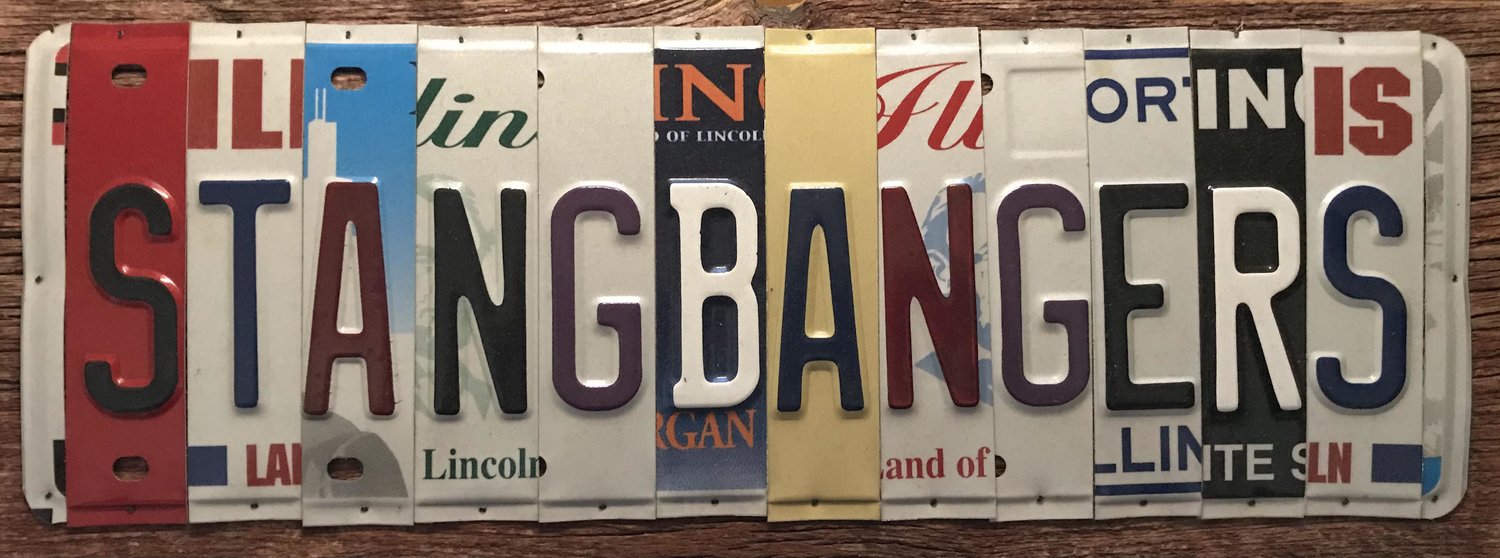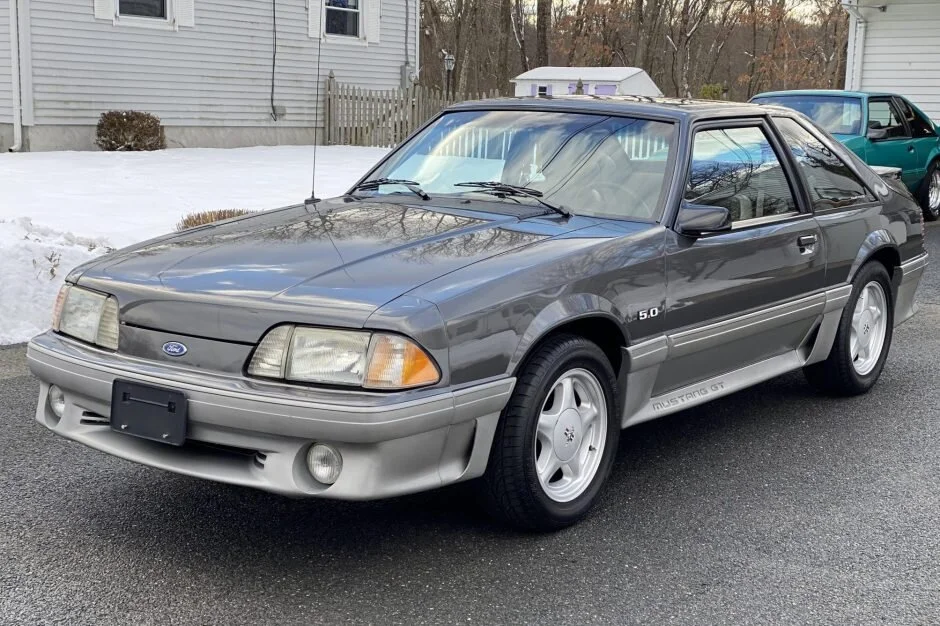Team Mustang's Tom Barnes Rides Off Into Retirement
Working on one of the Blue Oval’s most iconic nameplates — the Ford Mustang — attracts a variety of dedicated enthusiasts from across the company who have a particular passion for Ford’s famed pony car. That passion and talent is why the car’s internal development group known as Team Mustang has been able to keep delivering products that live up to the Mustang’s brand promise year after year. While Mustang’s designers and chief engineers may seem to gain the most notoriety in the hobby, there are also Mustang superstars who work in the trenches of product development who get little, if any, exposure. That’s likely why — unless you’ve attended a media briefing or have been a corporate Team Mustang insider — you may not have heard about Tom Barnes.
If you’ve seen the Hollywood movie on the S550 Mustang called “A Faster Horse,” then Barnes was the guy who got home from work, laced up his hockey skates and went skating around his backyard ice rink to help clear his head for his work on “the next Mustang.” But in his long career at Ford, Tom never cared about being in the spotlight — all he has cared about is that next Mustang and the people who want who buy them. In this week’s Quick Look at Ford People, we’re saluting Tom Barnes, the recently retired Mustang Vehicle Engineering Manager. We just felt it’s important for Ford pony car fans to know that Barnes has been the source for much of the magic that has found its way into the Mustang lineup over the past 15 years.
So here’s some insight about Barnes, and what he has meant to our hobby. Right up to his retirement at the end of last year, Barnes had worked tirelessly on Mustang as Vehicle Engineering Manager for some of the most memorable models to hit the market of late, including the 2018-19 Bullitt, the 2018-19 and 2020 GT Performance Pack Level 2, the 2020-21 2.3L Hi-Po Package and the 2021 Mustang Mach 1. What’s more, he’d been directly involved in the laying groundwork for the next generation Mustang.
Before all that, he was the driving force behind the development on the all-new-for 2015 “S550” Mustang — which was a quantum leap for Mustang engineering and technology. So what did his work entail as the Mustang’s Vehicle Engineering Manager? It was Barnes’ job to ensure that customers get a cohesive vehicle whose thousands of parts work in harmony. Barnes and his team tested dozens of prototypes on the track, road and in the lab over more than three years before the first cars were ever built and delivered to a customer. “A sports car always has to be fun to drive and put a smile on the driver’s face,” Barnes told us in an interview on the S550. “Our team strives to make a car like Mustang both fun and functional for our customers.”
Barnes has been immersed in car culture from an early age and continues to devour all things automotive. As a child he was into the vehicles he saw on television, such as Speed Racer’s Mach 5 and the Batmobile. Barnes’ father worked for an automotive supplier, and family vacations were always road trips where counting car brands from the car window was a favorite way to pass the time.
“When I was young, I always paid attention to cars — but not in the classic way,” Barnes explained. “My dad wasn't a wrench guy, nor was I. I was always a little analytical. I mean, I always paid great attention to cars: ‘Oh look, there’s a whatever.’ Or, ‘There's a ’73 whatever whatever. There's a ’75 whatever whatever … I guess that means I'm a numbers guy or a process guy?
“Growing up I was little car-crazed; my first car was a Ford Maverick. Even though it was just transport, it was fun. The first of my two Mustangs was a 1985 SVO. I now find it humorous after working on S550 that my SVO was an inline-four turbo. I know that was kind of an odd Mustang to many people, but it wasn't to me. It wasn’t about flying around smoking the tires — it couldn't do that. I mean it was quick, but it wasn't a stoplight bandit; it was all about the handling. It was well-balanced.”
After earning master’s degrees from both Michigan State and the University of Michigan, Barnes followed his passion into the auto industry, starting his Ford career in research before moving into chassis engineering and vehicle integration. Barnes then joined the Mustang team and made his home there for more than 15 years, helping to bring both the S197 Mustang to market in 2004 and the all-new S550 during 2014.
“I have always gravitated toward Mustang,” Barnes told us. “I kept waiting and finally a Mustang spot came up and I jumped at it. It was really cool because I really had a lot to do with how the ’05 car ended up, then the ’06, followed by an ’07 and an ’08 with the Bullitt, and we had an ’09 when we did the glass roof – all before the big 2010 freshening. Right on its heels we had the 2011 when we did new powertrains and brought back the 5.0. So while we were doing the 2010, we were also doing the ’11 so you're juggling, you're absolutely juggling all the time.
“My job as the vehicle engineering manager reported to the Chief Nameplate Engineer (CNE), who runs the whole show,” he explained. “The CNE work means that two people are the vehicle engineering manager and the program manager. At certain times the studio is very close too and they are very important, and at certain times the planning community is very close and important as well. Before the 2010 Mustang came out, we started working on the Boss for 2012 so a lot of things were going on, and just as the ’10 launched we started work on the 2015 car.
“I was what they call the basic design project leader on the 2015 program. Basic design is the group within Ford that does the advanced engineering; the kind of architecture group that lays out how the car will all fit together. For the 2015 Mustang that was really important because we're changing the rear suspension which also meant we had to switch the drivetrain, and then as we started to learn more about it, we ended up also doing the front suspension. So we were the group that dealt mainly with the studio on the up-front things … we had to manage around all the studio stuff to make sure that the car remained functional and nimble and all the things a Mustang has to be.”
Although those who know Tom and his work at Team Mustang were sad to hear of his retirement, Barnes remained upbeat:
“The good news is that Ford never stops working on the Mustang,” Barnes noted. “Ford never, ever stops working on it, or stops trying to make it better, or stops rethinking on how to make this magic formula that is Mustang even more appealing. Ford wants this car to be appealing to everybody — young people, old people, rich people, poor people — and to keep it accessible, because that is what it is. It's a matter of getting this fun and freedom idea to everyone. It's the reason why Mustang is an icon; because so many people can relate to it.
“Mustang is much more than just a car,” Barnes said. “It's a product that is much bigger — and not just for those of us who have worked at Ford — but anyone who's ever owned a Mustang.”
It’s that perspective that offers a hint of the passion that Tom Barnes has brought to the Mustang program, and shows why Tom’s name should be added to Ford’s long list of dedicated Mustang people who have been key to the car’s ongoing success. We wish him a long and happy retirement!
(photo credit: Ford Performance)




